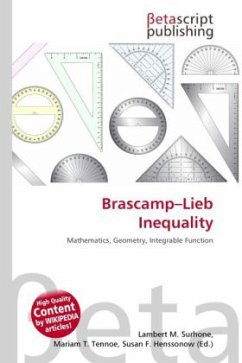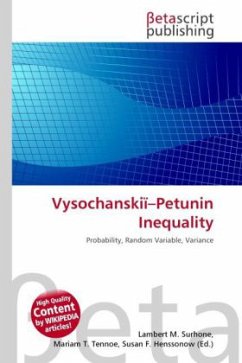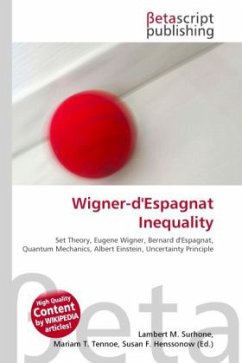
Poincaré Inequality
Versandkostenfrei!
Versandfertig in 6-10 Tagen
23,99 €
inkl. MwSt.

PAYBACK Punkte
12 °P sammeln!
High Quality Content by WIKIPEDIA articles!In mathematics, the Poincaré inequality is a result in the theory of Sobolev spaces, named after the French mathematician Henri Poincaré. The inequality allows one to obtain bounds on a function using bounds on its derivatives and the geometry of its domain of definition. Such bounds are of great importance in the modern, direct methods of the calculus of variations. A very closely related result is the Friedrichs' inequality. The optimal constant C in the Poincaré inequality is sometimes known as the Poincaré constant for the domain . Determining...
High Quality Content by WIKIPEDIA articles!In mathematics, the Poincaré inequality is a result in the theory of Sobolev spaces, named after the French mathematician Henri Poincaré. The inequality allows one to obtain bounds on a function using bounds on its derivatives and the geometry of its domain of definition. Such bounds are of great importance in the modern, direct methods of the calculus of variations. A very closely related result is the Friedrichs' inequality. The optimal constant C in the Poincaré inequality is sometimes known as the Poincaré constant for the domain . Determining the Poincaré constant is, in general, a very hard task that depends upon the value of p and the geometry of the domain . Certain special cases are tractable, however. For example, if is a bounded, convex, Lipschitz domain with diameter d, then the Poincaré constant is at most d/2 for p = 1, d/ for p = 2 (Acosta & Durán 2004; Payne & Weinberger 1960), and this is the best possible estimate on the Poincaré constant in terms of the diameter alone. In one dimension, this is Wirtinger's inequality for functions.












